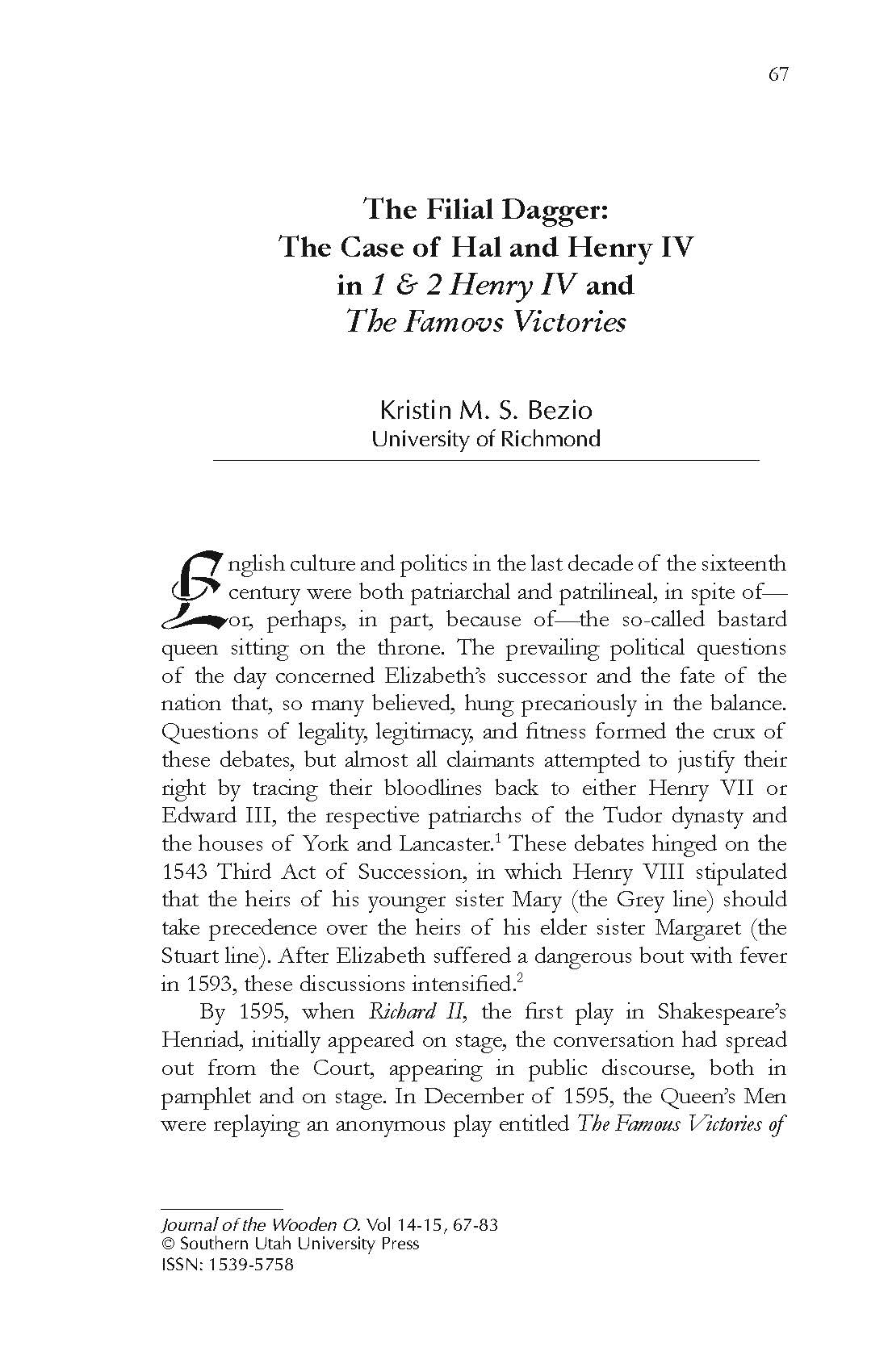The Filial Dagger: The Case of Hal and Henry IV in 1 & 2 Henry IV and The Famovs Victories
Main Article Content
Abstract
English culture and politics in the last decade of the sixteenth century were both patriarchal and patrilineal, in spite of—or, perhaps, in part, because of—the so-called bastard queen sitting on the throne. The prevailing political questions of the day concerned Elizabeth’s successor and the fate of the nation that, so many believed, hung precariously in the balance. Questions of legality, legitimacy, and fitness formed the crux of these debates, but almost all claimants attempted to justify their right by tracing their bloodlines back to either Henry VII or Edward III, the respective patriarchs of the Tudor dynasty and the houses of York and Lancaster.1 These debates hinged on the 1543 Third Act of Succession, in which Henry VIII stipulated that the heirs of his younger sister Mary (the Grey line) should take precedence over the heirs of his elder sister Margaret (the Stuart line). After Elizabeth suffered a dangerous bout with fever in 1593, these discussions intensified.2
